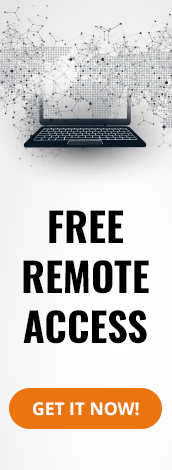What is symdiag.exe?
Originally developed by Symantec Corporation, symdiag.exe is a legitimate file process. This process is known as symdiag.exe and it belongs to Symantec Help. It is located in C:\Documents and Settings by default.
symdiag.exe virus is created when malware authors write virus files and name them after symdiag.exe with an aim to spread virus on the internet.
Affected Platform: Windows OS
How to check if your computer is infected with symdiag.exe malware?
If your system is affected by symdiag.exe malware, you will notice one or several of the symptoms below:
- symdiag.exe occupies an unusually large CPU memory
- Erratic internet connection
- Your browser is bombarded with annoying popup ads
- Computer screen freezes
- PC's processing speed suffers
- You are redirected to unknown websites
To pinpoint the virus file location, take the following steps:
Step 1: Press CTRL+ALT+DEL keys at once to open Task Manager.
Step 2: If you notice the file located outside C:\Documents and Settings, you should run an antivirus scan to get rid of the malware.
How to remove symdiag.exe malware from system using Comodo Cleaning Essentials?
You can either choose to remove symdiag.exe and other malwares using Comodo Antivirus, or Comodo Cleaning Essentials (CCE) – both of which are absolutely free to download! CCE is a set of computer security tools designed to help you identify and remove malwares and unsafe processes from an infected computer.
To remove malwares using CCE, take the following steps:
1. Check the system requirements and download the feature-rich CCE suite for free.
2. After installation, choose the type of scan you want to perform. CCE offers 3 scan options to get rid of malwares from a PC:
- Smart Scan: Does a scan on critical areas of your system.
- Full Scan: Does a complete scan of your system.
- Custom Scan: Does a scan only on selected items.
The process to initiate the above mentioned scans are self-explanatory and thus, easy-to-use.
Additionally, it's recommended that you approve of any updates that the CCE will prompt you about to ensure it does a better job of identifying all the latest threats.
3. Click 'Next' to view the results.
Regardless of the type of scan you choose, the results will sometimes show false positive (flagging files that are actually safe), which has to be ignored. Only select the files you want to get rid of.
4. Click 'Apply' to apply the selected operations to the threats. The selected operations will be applied.
| No. | Company | File Type | SHA1 | MD5 | Malware Name |
Digitally Signed |
File Version |
Product Version |
Submitted From |
Malware Behavior |
|---|---|---|---|---|---|---|---|---|---|---|
| 1 | N/A | Executable | 3f547012ff5fd2ae 07f99137654b6e19 2480244b |
f3fbc245295a96ca faa0d6f5a4d97a54 |
Virus.Win32. Virut.CE |
No | N/A | N/A |  Portugal Portugal |
N/A |
| 2 | N/A | Executable | 2f03ea64d856dccc 3bfcbb72b21eae86 06f2d92a |
99d508e3e8b98f24 494c29d1f5676e39 |
Virus.Win32. Sality.gen |
No | N/A | N/A |  Iran, Islamic Republic of Iran, Islamic Republic of |
N/A |
| 3 | N/A | Executable | 3e49bd3d3af4ece0 f18a97d5f563ef34 c6f88d65 |
744d8f07723743f4 449d77a427d4eb3e |
Virus.Win32. Virut.CE |
No | N/A | N/A |  Portugal Portugal |
N/A |
| 4 | N/A | Executable | c24f22e35a6e4a2d eb0b429f3246aee1 aca3e486 |
9141bc0016318dbc b2c1ae3c633043d5 |
Virus.Win32. Virut.CE |
No | N/A | N/A |  Portugal Portugal |
N/A |
- 4 items per page
- 8 items per page
- 16 items per page
- 32 items per page
| No. | Company | File Type | SHA1 | MD5 | Digitally Signed |
File Version |
Product Version |
Submitted From |
|---|---|---|---|---|---|---|---|---|
| 1 | N/A | Executable | b785137695cb2717 d39c1cccae30fbee 7a99cf0f |
945a576c51ed7b28 737a287dd3986d25 |
No | N/A | N/A |  United States United States |
| 2 | N/A | Executable | 201807500077d328 e20926ab0a66c60d 8ed52631 |
53bfb79d19a9e51e ede822c39fd92efd |
No | N/A | N/A |  China China |
| 3 | N/A | Executable | 14dccbb08e365766 e649bc19a3969fed 8c66b7c6 |
a5f29c77e56790ab 25f36b06c29d6f58 |
No | N/A | N/A |  Internal Submission Internal Submission |
- 4 items per page
- 8 items per page
- 16 items per page
- 32 items per page








